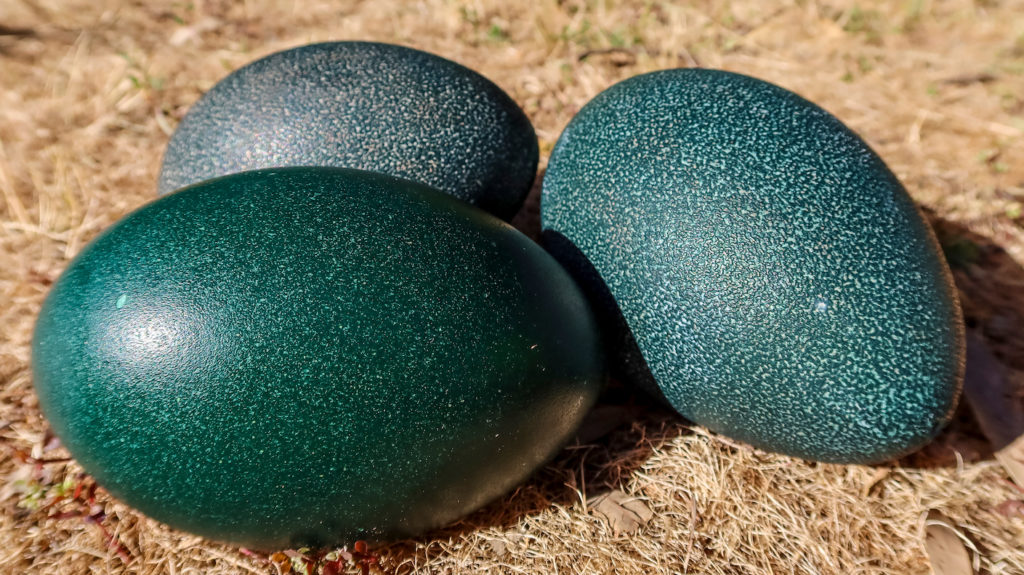The Western Foundation of Vertebrate Zoology (WFVZ), located in Camarillo, California, is a natural history museum and research center that deserves to be better known.
I first learned of the WFVZ through an arresting photograph of emu eggs by the Boston-based photographer Rosamond Purcell. Each egg was like a miniature work of art: ranging in color from rich teal blue to powdery azure to a dreamy sea green, they seemed to emit a silvery glow.
A bird museum in Camarillo? I thought. Who knew?
The WFVZ was co-founded in 1956 by J.R. “Bill” Pemberton and LA businessman Ed Harrison, an amateur ornithologist who traveled widely and originally housed his collection in a shed behind his Brentwood home.
Specializing in bird materials from around the world, the foundation’s mission is to study, educate, and especially conserve.
Today the WFVZ boasts more than 300,000 sets of bird eggs, 18,000 nests, and 56,000 study skins of birds, making it one of the largest and most comprehensive collections of its kind in the world.
Its database is searchable at wfvz.org. Visits to the museum are by appointment only and can be booked between 10 a.m. and 2 p.m. on Wednesdays and Fridays, for overlapping one-hour appointments. All tours end by 3 p.m.
On a Friday afternoon, I had the place entirely to myself. The experience was like happening upon my own cabinet of wonders.
Friendly flocks of ducks, frozen in flight, are suspended from the ceiling. Geese in formation line the walls. A mural of the Pacific with a pod of brown pelicans soaring aloft runs the length of one side of the room.
Most of the foundation’s eggs and nests date from the mid-1800s to the early 1900s. Nowadays collecting bird eggs is highly regulated but those were looser times.
In 1953, one story goes, Ed Harrison was in Kenya with Bill Pemberton, where they spotted a clutch of 22 ostrich eggs and decided to grab them all. Suddenly he found himself surrounded by lions. Unarmed, he began frantically blowing out the contents of the eggs, reasoning that if he was killed, at least he’d at least prepare the eggs for shipment to the U.S.
His tenacity was admirable, but the contemporary mind wonders: Did he really have to take all 22 eggs?
However they were obtained, the eggs are showstoppers, from pebbled to smooth, from the diameter of a jellybean to the size of a grapefruit. The osprey eggs are mottled ivory and brown; the screech owl’s pure white; and the red-shouldered hawk’s buff with abstract expressionist moss markings.
Some eggs are olive green; others nearly black.
The eggs of the brown booby are so shiny they appear to have been varnished. The banded wren lays eggs that can be either Madonna blue, or white. Some eggs are oval, some pointed. Peregrine falcon eggs are a thrilling russet red.
Also on display are some of the cigar boxes, coffee cans, and cut-down cottage cheese containers, lined with cotton or shredded paper, in which the eggs were transported in the early days of collecting.
Up and down the rows I ambled, peering at the birds: the egret, the black-crowned night heron, the red-tailed “Harlan’s” hawk. Falcons, pheasants, quail, bobwhite, sandhill cranes, black-necked stilts.
Almost as wondrous were the nests. The red-winged blackbird nest had adorned its home with an arrangement of stalks of dried grass and wheat so charming it could double as a lady’s hat. The golden eagle’s nest, made of thickish tree branches, had to have been three feet wide and harbored a large chunk of sun-bleached turtle shell.
The brown creeper builds a kind of stacked vertical abode behind protruding pieces of bark on pine trees. The rock pigeon uses stick-like materials, but in a pinch — say, being in the middle of the city — has been known to make a nest consisting of 75% nails. A Malaysian swift makes an edible nest from gelatinous threads of condensed saliva.
I can’t remember the last time I spent such a pleasant, lost-in-thought hour. Near the end of my self-guided tour, I fell into conversation with René Corado, a biologist, researcher, and author who has worked at the foundation for more than 40 years.
A shoe-shine boy in Guatemala, Corado came to the U.S. as a youth and started working as a gardener in Hollywood for the Donald L. Bleitz Wildlife Foundation in 1982. Bleitz’s collection passed on after his death to the WFVZ, and Corado — who, along the way had become entranced by eggs and birds — began working alongside Ed Harrison, steadily building his knowledge.
One thing led to another. He learned English, received an associate’s degree from Oxnard College in 2007, and is now the WFVZ’s collections manager.
He tells the story in the children’s book “El Lustrador.” The bilingual edition is entitled “The Adventures of René Corado, The Shoeshine Boy” (Editorial Miguel Angel, $8). As well, Corado has established the El Lustrador Foundation, a nonprofit whose mission is to help underprivileged Guatemalan youth afford education.
Turns out Rosamond Purcell has an entire book of WFVZ-based photos — “Egg & Nest” (Belknap Press, $10.30) — that René Corado helped co-author.
The WFVZ is a nonprofit, conducts ongoing fieldwork on local bird species, and welcomes groups of schoolchildren.
So grab the kids and go — or just go yourself, and be amazed.

